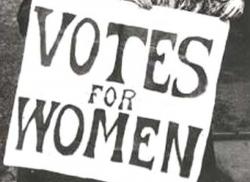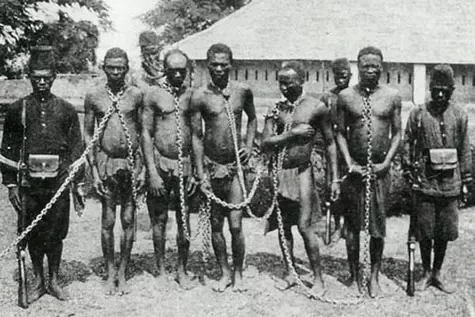By Jo Lewin, Brentwood Labour Party (personal capacity)
February 6 marks the centenary of the Representation of the People Act, granting women a vote for the first time. On this day in 1918, Parliament extended voting rights to all men over the age of twenty-one, thus enfranchised more than five million more men. But by extending voting rights to women over the age of thirty, the Act also enfranchised around eight and a half million women and enabled them to participate in the democratic election process for the very first time.
Parliament and the selection of its members had historically been the exclusive right of those who, through their material wealth, had clear interests in the wellbeing of what they saw was ‘their’ country. This meant that ‘democracy’ was limited almost exclusively to the owners of landed property and vast estates dating from the fifteenth and sixteenth centuries, but it gradually came to encompass those with movable property and wealth, like merchants, bankers, company owners, and skilled professionals like lawyers and physicians.
Even after the 1832 Reform Act, only one in twenty-four people could afford to stand for parliamentary positions or participate in elections. By 1867, the reduction of property requirements extended the vote to one in every twelve and by 1884, through further amendments, to one in every seven people, all of whom were men. The 1918 Act, therefore, marked a qualitative leap, allowing one in three people, including women for the first time, to participate in local and general elections, and to stand for positions in government.
But why did this happen? And why suddenly include women when they had been overlooked for centuries?
A major factor which cannot be overlooked, is the campaigning for male and female suffrage by organisations and individuals over many decades. During the nineteenth century, the Chartists, an overwhelmingly working-class movement, was established and fought to extend voting to men of without property. Strike action and protests, at time revolutionary, erupted across Britain under the banner of Chartism and this movement lay behind the three nineteenth century Reform Acts which extended voting franchise to larger and larger numbers of middle class and working-class men. Women had long participated in the Chartist movement.
The principle concern of the working classes at this time was having their voices heard and gaining political representation to help defend them from worsening working conditions in Victorian factories, mills and mines. In many workplaces it was common for men, women, and even children, to work more than twelve hours a day without breaks, being verbally and physically abused and risking fatal injury for starvation wages.
It was something of a project among middle-class women to seek female suffrage, Millicent Fawcett and a number of other women began to petition MPs in 1866. Millicent herself was married to MP Henry Fawcett and was close friends with MP John Stuart Mill. Likewise, Helen Bright Clark, another campaigner for women’s suffrage, was the daughter of MP John Bright. Their association with important men is by no means to belittle the suffrage campaign of this time, but it has to be said that at this time working class women were not in a position to participate in the political conversation around female suffrage.
In 1897, seventeen different groups amalgamated to form the National Union of Women’s Suffrage Societies, (NUWSS) which is commonly referred to today as the Suffragist movement. Their tactics were borne out of Christian Quakerism and involved passive and peaceful methods. They produced and distributed literature, organised peaceful demonstrations and wrote to members of Parliament. Appeals were handed in to the House of Commons. The movement gathered petitions, organised public meetings, and they created and published their dialogues with fellow women’s suffrage campaigners in the USA, to raise the profile of their campaign.
However, the suffragist campaign had little impact, other than persuading a small handful of politicians who were unable to change anything, surrounded as they were in a sea of conservatism. Most MPs were adamant that women’s responsibilities and interests were the polar opposite of men’s; they saw women as dainty little house-elves who were subordinate to brothers, father and husbands. Women did not need to trouble themselves, they argued, with bigger questions like politics.
“Let women be what God intended,” Queen Victoria’s said in 1870, in words dripping with saccharine condescension, “…a helpmate for man, but with totally different duties and vocations”. Forgetting to be quite so patronising in her private letters, she also remarked that “Were woman to unsex themselves by claiming equality with men, they would become the most hateful, heathen and disgusting of beings and would surely perish without male protection.”
Impatient with the NUWSS’ lack of progress, the Women’s Social and Political Union (WSPU) formed in 1903 and very quickly set themselves apart from the NUWSS in the form of the suffragettes. In 1905, Christabel Pankhurst and Annie Kenney interrupted a political meeting to challenge MPs Sir Edward Grey and the young Winston Churchill. They were thrown out and arrested.
From then on, the suffragettes were renowned for being agitational and disruptive in their methods. Those critical of them accused them of “shrieking” and being “hysterical” in their tone and for the conservative establishment, this vindicated their view that women were unsuited to politics and likely to put-off any reasonable or remotely intelligent women who were.
The suffragettes participated in more and more demonstrations; they heckled MPs and even the Prime Minister, Henry Herbert Asquith. By 1909, arrests were taking place. An aggressive police presence at a 1910 Black Friday demonstration was met with the women hurling stones at the police and then being arrested and in the process, being sexually assaulted by officers.
The confrontation between suffragettes and the establishment seemed to be coming to a head. The press goaded suffragettes with personal slanders and malicious propaganda. The police beat and abused women when they publicly demonstrated. The women issued threats of escalated violence which were subsequently followed by arson attacks, smashing windows and even sending letter bombs to MPs.
Upon arrest, the women would declare themselves political prisoners and begin to hunger strike. The prison staff, fearing scandal if any women died in their custody, began to force-feed the women. This involved torturous treatment of several staff tying women down, thrusting their heads back and jamming thick rubber tubes down the throats of the women, creating injury to the nose and oesophagus, and then pouring liquefied food down into their stomachs. Women described their experiences of burning sensations, vomiting, choking, and the feeling of drowning. A misguided tube into the wind-pipe could even result in pneumonia.
Suffragette activity reached a horrifying crescendo in 1913 when Emily Wilding Davison, stepped out in front of the King’s horse at the Epsom Derby. Swathed in the suffragette colours of violent, white and green, she was struck by the horse and died of her injuries in hospital several days later. Despite all the misgivings and prejudices towards the campaign for women’s suffrage, 50,000 people attended Davison’s funeral procession through London.
Yet despite this horrifying tragedy, enfranchisement for women was still not achieved. The outbreak of war in 1914 forced the campaign for women’s suffrage into a hiatus while seemingly more important issues were pursued. Emmeline Pankhurst, the matriarch of the WSPU, was swept up in the patriotic jingoism of the Great War. The same Government which had arrested and ridiculed her now won her support through shallow national chauvinism.
Pankhurst and her daughter Christabel, ‘heir’ to the WSPU, now concentrated their ‘deeds, not words’ motto on fighting the ‘German Peril’ instead fighting for votes. They began the White Feather movement, which bullied and hounded reluctant men, including pacifists and conscientious objectors, into joining the war effort, so they could be ripped apart by machine guns and cannon shells, alongside millions of other men in the muddy fields of Flanders and Northern France.
Disheartened by the hypocritical twists and turns in the WSPU, two of the Pankhurst daughters, Sylvia and Adela, resigned and distanced themselves from its chauvinism. Emmeline Pankhurst was furious at their disloyalty, and in a final dismissal she gave Adela £20 and insisted she emigrate to Australia. Sylvia Pankhurst turned to socialism and became estranged from her mother. The women’s suffrage movement in Britain was dissolved by the desire of its fore-runners among middle-class women to completely capitulate to the nationalist and imperialist agenda of the ruling class and its capitalist cronies.
A much more credible explanation for the acquisition of women’s suffrage lies not in the suffragette movement, but in the social effects of the Great War and the mobilisation of millions of women into what had historically been ‘men’s’ work. With 5 million British men at the front lines between 1914 and 1918, it fell to the women to fill the gaps created in labour and to enter the wartime industries, into healthcare and education, farming, munitions, engineering, chemical production, mining, transport, and the armed services, as well as into the massive administration apparatus which co-ordinated resources. In the Woolwich Arsenal alone, in South London, there were 30,000 jobs for women working in munitions.
By 1915, technical colleges were training twice the number of women than men. Very soon, highly skilled women were being promoted to manage their vast numbers of comrades on the factory floor. By 1917 the Gentlewoman magazine proudly announced that “One girl is already in charge of 6,000 women workers in one of the largest munitions works in England… There is no finality in engineering, and the trained woman engineer has come to stay.” Born out of their experience, women gained the economic leverage to demand better conditions and political participation in society, beyond their home and family.
While estimates vary somewhat, women went from being around 24 per cent of the working population in 1914, to almost 50 per cent. Not surprisingly, women went from making up just 350,000 of union members to a million by 1918. In some cases, trade unions were resistant to this, because women were seen as a threat to the male workforce who were expected to return from the war. Women were paid less than men because it was presumed by employers that women would produce less output, being the ‘weaker sex’. Furthermore, it was feared that women, enjoying a greater sense of purpose and the camaraderie of working with so many others, would want to stay put, emasculating men and jeopardising the household economy if men could not find work.
Despite strikes during 1917 and 1918 to demand increased or equal pay, and despite assurances and evidence that women could perform as effectively as their male counterparts, the 1919 Restoration of Pre-War Practices Act forced women out of the wartime industries. This raises a final question. How then, did women still secure the right to suffrage, if their economic role was always going to be stripped from them at the end of the war?
This brings us to another key question in the real explanation for female suffrage in 1918. A year prior to the end of the War; on the 8th March 1917 (February, according to Julian calendar), women workers in Russia had marched from factory to factory, bringing 50,000 people out on strike. What followed in Russia was a revolution which led to the fall of Tsar Nicholas II, the withdrawal of Russia from the First World War, the creation of a new provisional government and eventually the first Communist revolution in history. Women had been participating in political activity and the Peasants and Worker’s Soviets for months already, so on July 20th 1917 women were rightly enfranchised by the Kerensky government in Russia.
The tremors of the Russian Revolution were felt right across Europe, and there were revolutionary uprisings in Hungary, Germany in both cases leading to the collapse of the old monarchies. In Britain, the fear of revolution can most starkly be seen in the speech of the Liberal MP for Osgoldcross in West Yorkshire, Sir Joseph Compton Rickett. In a Parliamentary debate in 1917, he said
“The Russian democracy, as far as we know, intend to adopt the suffrage for women. There are one or two European States which have already adopted it. The United States is on the road to it. If Germany should have to face a revolution anything like that which has swept across the neighbouring country of Russia, we shall find that Germany may also call in women to her councils. Therefore this country and this Empire will not be left alone in so revolutionary and complete a change in its franchise. Others will be on the same road, and we shall be only leading. There is also the greater employment of women in industry, partly due to a fall in the marriage rate and partly due to the fact that women have become accustomed to work during the War, have found that they have been successful, and desire to continue at it…”
Compton Rickett observed that as Russia and Germany were both granting suffrage to women, it would be in-trend for Britain to do the same. Furthermore, he noted that the participation of women in wartime industry was evidence of their comparable abilities to those of men. But he also observed that it would be a comradely kindness to give suffrage to those who had manned the factories in Britain’s time of desperate need:
“There is still one other reason. The Angel of Death… has struck almost at every door and at every home, and has brought to mother and wife and daughter and father and brother one common sorrow. I do ask those… not to give this vote grudgingly, but to hold out two hands to those who are coming in to help us, so that we may bring them in as friends and comrades and show at least, if we are the stronger sex, that we are also the most chivalrous.”
It is interesting to note the concerns that were being expressed at this time. Along with the traditional arguments about women’s duties and interests being exclusively in the home, it was also feared that an influx of inexperienced female voters would be dangerous, especially at a time when peace and stability would be needed in the post-war society. It was suggested that, with the Labour Party having spearheaded the women’s suffrage campaign, female suffrage would provide an overwhelming and concerning advantage to Labour.
Mary Augusta Ward, head of an anti-suffrage campaign, commented that granting franchise to women could “cripple disastrously the indispensable conservative forces of the country at a time when there is the most imperative need of a due balance between conservative and liberal principles and influences”. Undoubtedly Mary Ward was expressing the concerns of the Establishment, which saw female suffrage was a stepping stone on the path of radicalism and revolution.
Regardless of centuries of bigotry towards women, female suffrage was finally granted on 6th February 1918. But it was intentionally limited. The Act granted the franchise only to women over thirty years of age and who occupied a permanent home, or possessed any landed property of the annual value of £5. Or, if she intended to vote for a ‘university’ member, if she was a graduate of a university that confers degrees on women, or if she has qualified for a degree in a university that does not admit women to degrees. In other words, the Act granted suffrage to relatively wealthy women, who were often married, or were considered well-educated. This included only 40% of British women, not to mention the exclusion of migrant women from diverse parts of the British Empire.
Furthermore, the Act came nowhere near to solving many of the major gender-based inequalities which continued to plague the 20th and now 21st centuries: issues of wage inequality, childcare duties, maternity and paternity leave, lack of access to education or certain professions, spousal abuse, divorce and marriage rights, work-place discrimination, bullying and, not least, sexual abuse and assault.
One hundred years on and the achievement that was the 1918 Representation of the People’s Act appears to be dwarfed in comparison to the monumental tasks with which the British working class are faced with today in light of hideous revelations about the scale of both the moral bankruptcy and fiscal corruption which plagues society. It was one small step along the road, but a step that was taken nonetheless, and a lesson which must embolden us for future struggles.
January 7 2018



